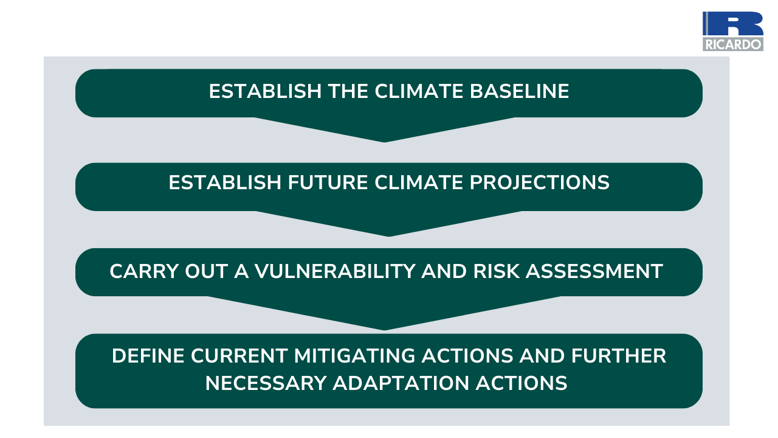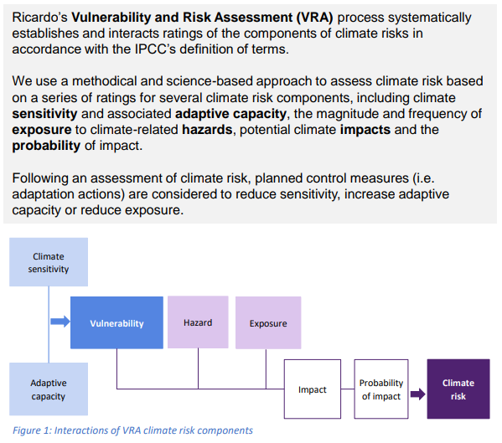
Ricardo's climate action plan: A blueprint for airport climate resilience
Highlands and Islands Airports Limited (HIAL) is responsible for 11 regional airports providing lifeline services to some of Scotland’s remotest communities across the Highlands and Islands.
Ricardo worked with HIAL in early 2023 to produce a bespoke tool that is being used to assess climate risk on the airports operations and make well-informed, strategic decisions on how to mitigate that risk. Supporting HIAL were Ricardo’s leading global climate adaptation and aviation specialists.
The bespoke tool is part of HIAL’s first ever Climate Change Adaptation risk assessment incorporating a climate vulnerability and risk assessment, which assessed HIAL’s climate-related physical risks within each airports operations, across the local infrastructure, and the businesses strategic functions. The tool is now embedded within HIAL’s operational risk management processes.
The aim of the project was to understand current and future climate-related risks, and identifying mitigations and further adaptation actions and investments.
Challenge
Across the globe, the aviation industry is highly sensitive to climate-related hazards and resultant climate vulnerabilities and risks have the potential to cause severe disruption to airport operations, delays for passengers, and ultimately, reductions in the safety of air travel.
The most recent Intergovernmental Panel on Climate Change (IPCC) assessment report states that countries nationally determined contributions (NDCs) make it likely that warming will exceed 1.5°C during the 21st century, with every additional increment of global warming increasing the severity of extreme events.
As HIAL’s airports provide a lifeline service to individuals, communities and businesses across Scotland’s Highlands and Islands, it is essential for HIAL to ensure that its operations, infrastructure, and strategic functions are resilient to climate variability and change. Lives depend on it.
Our Approach

The HIAL team needed a tool rather than a documented report to sit on a shelf, and we worked together closely to develop something tailored for HIAL’s needs.
There was a need to create something that would aid in decision-making whilst being aligned with HIAL’s internal risk management process. It’s important that the tool can be easily updated for any future risk assessments, for example , one of HIAL’s airports had a few floodings where car parks and terminal building were damaged, resulting in food contamination into the local water course and additional cleaning work for their employees.
This tool that has subsequently aided decision-making and planning for climate-related hazards and can be easily reviewed and updated as necessary.
The Vulnerability and Risk Assessment (VRA) systematically establishes and interacts ratings of the components of climate risks in accordance with the IPCC’s definitions of terms.
Climate sensitivities and associated adaptive capacities were rated in order to rate climate vulnerabilities. The magnitude and frequency of exposure of climate vulnerabilities to climate-related hazards was then rated to determine the scale of potential climate impacts and in combination with their likelihood resulted in ratings of climate risks.


- Updated risk assessment process
- Increased understanding of terminal buildings and HSE for employees
- Raised electrical sockets
- Invested in more PPE for employees
- Increased flood defences by local rivers to stop contamination
- Across the HIAL group they now have a built-in step of any project, looking at climate risk in any project that is being taken forward
- Forward looking at future opportunities that climate change is presenting (evaluating rainwater harvesting across the airports).
Outcomes
- Responsibilities are assigned for all identified climate risks, which should be incorporated into HIAL airports’ existing risk registers
- The climate risk register is reviewed annually to check that the existing and future control measures (i.e. adaptation actions) are implemented, the climate risks are regularly reassessed and any additional climate risks are included in the register
- The annual review of climate risks pays due heed to the latest climate science to ensure that existing and future control measures are appropriate
- External stakeholders to the airport and aviation industry continue to be consulted to share best practices regarding climate risk assessment, adaptation, and resilience.
- Support across the entire sustainability strategy life cycle
- Net zero
- Sustainable aviation fuel (SAF)
- Airport development, environmental impact assessment and regulatory support
- Air Quality
- Energy management and infrastucture
- Low carbon operations
- Resource efficiency and waste management
- Sustainable transport




